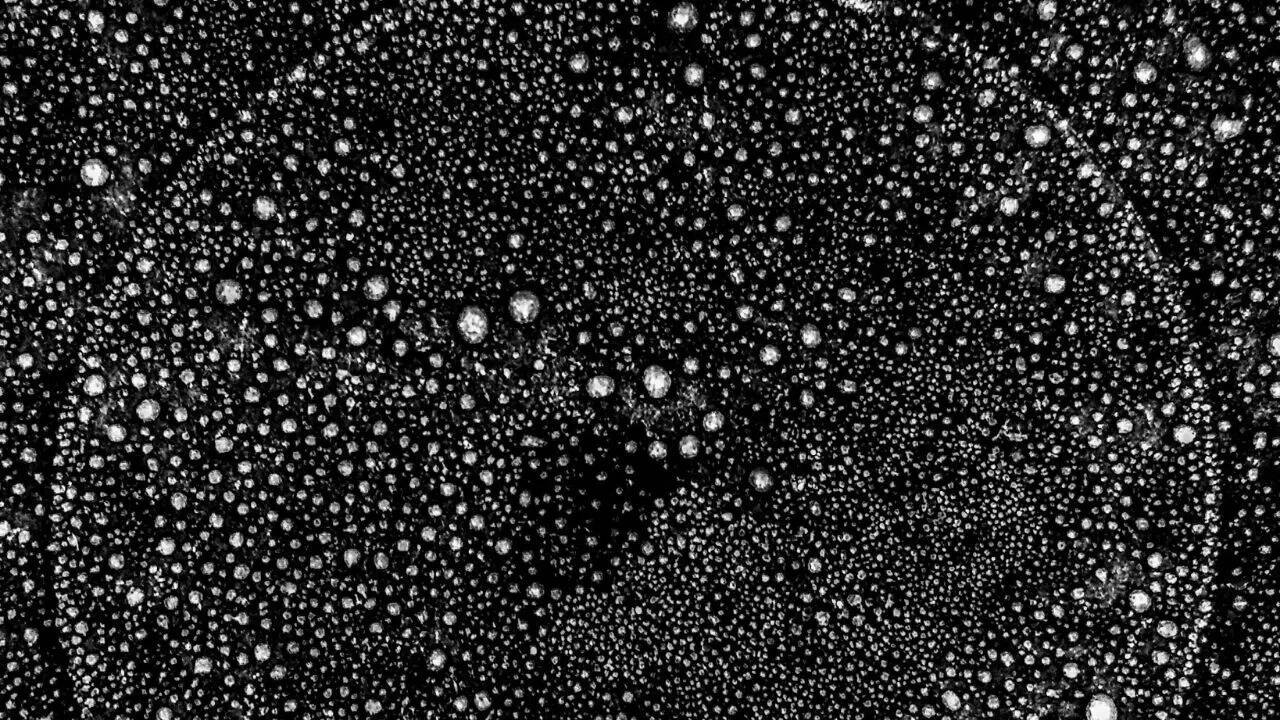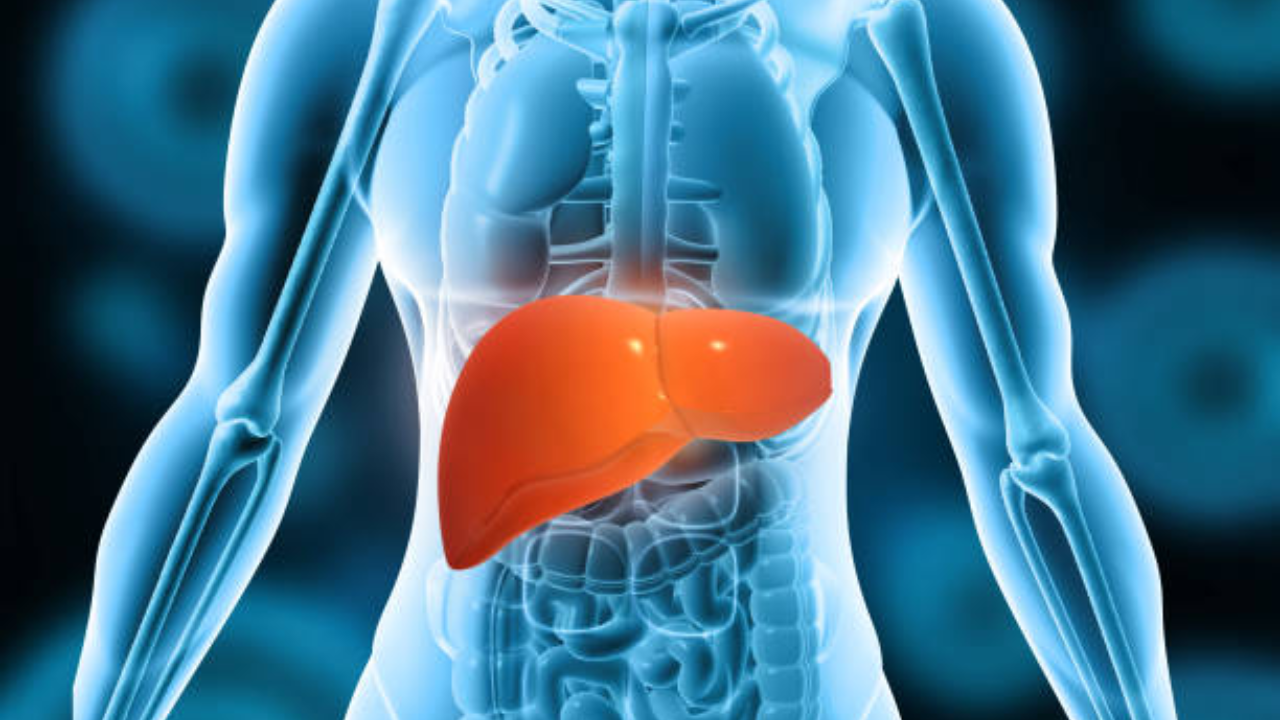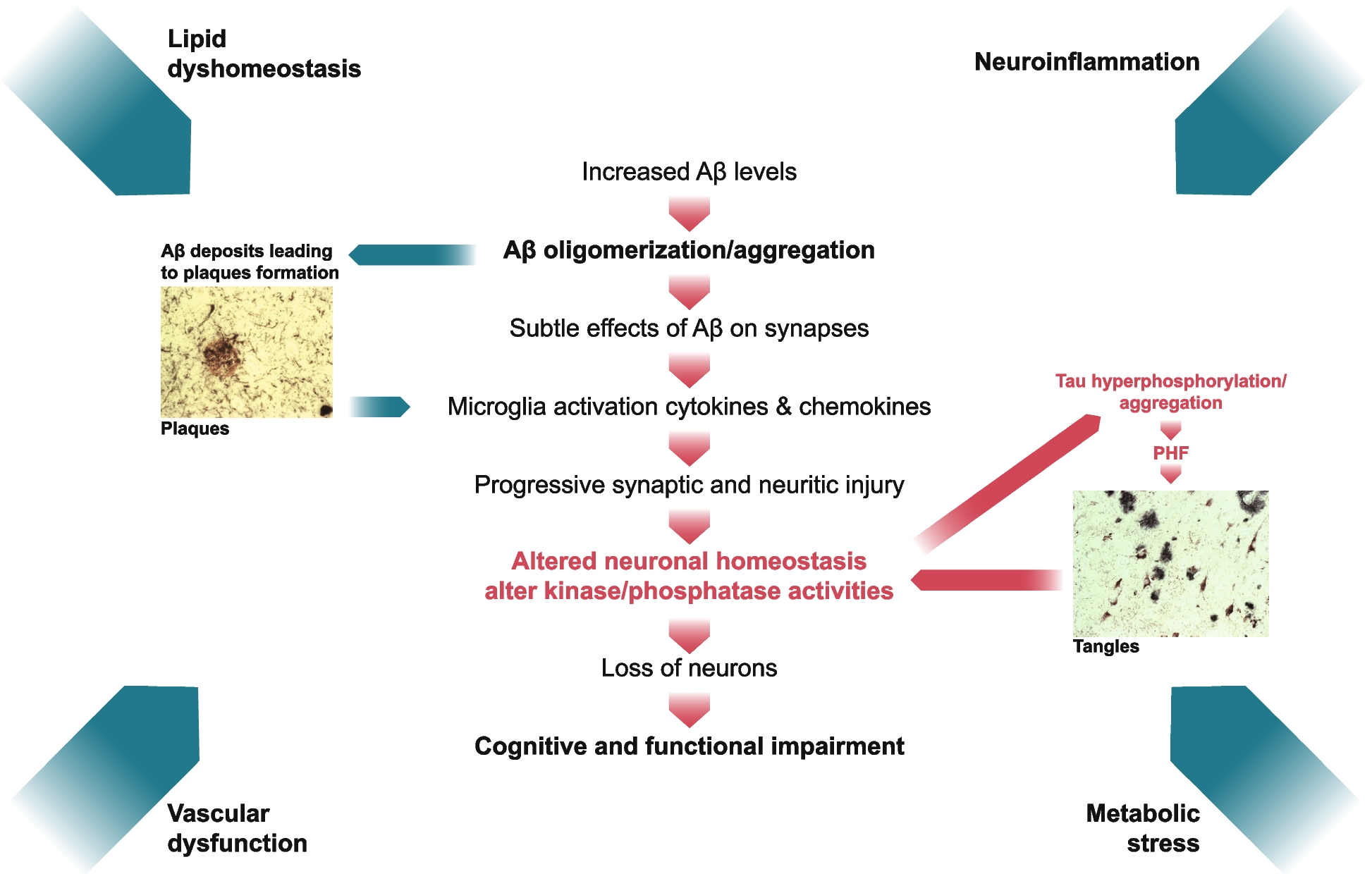Glenner GG, Wong CW. Alzheimer’s disease: initial report of the purification and characterization of a novel cerebrovascular amyloid protein. Biochem Biophys Res Commun. 1984;120:885–90. https://doi.org/10.1016/s0006-291x(84)80190-4.
Article
CAS
PubMed
Google Scholar
Alzheimer A. Uber eigenartige Erkrankung der Hirnrinde. All Z Psychiatr. 1907;64:146–8.
Google Scholar
Grundke-Iqbal I, Iqbal K, Tung YC, et al. Abnormal phosphorylation of the microtubule-associated protein tau (tau) in Alzheimer cytoskeletal pathology. Proc Natl Acad Sci. 1986;83:4913–7. https://doi.org/10.1073/pnas.83.13.4913.
Article
CAS
PubMed
PubMed Central
Google Scholar
Jack CR Jr, Andrews JS, Beach TG, et al. Revised criteria for diagnosis and staging of Alzheimer’s disease: Alzheimer’s Association Workgroup. Alzheimers Dement. 2024;20:5143–69. https://doi.org/10.1002/alz.13859.
Article
PubMed
PubMed Central
Google Scholar
Hardy J, Allsop D. Amyloid deposition as the central event in the aetiology of Alzheimer’s disease. Trends Pharmacol Sci. 1991;12:383–8. https://doi.org/10.1016/0165-6147(91)90609-v.
Article
CAS
PubMed
Google Scholar
Selkoe DJ. The molecular pathology of Alzheimer’s disease. Neuron. 1991;6:487–98. https://doi.org/10.1016/0896-6273(91)90052-2.
Article
CAS
PubMed
Google Scholar
Karran E, De Strooper B. The amyloid hypothesis in Alzheimer disease: new insights from new therapeutics. Nat Rev Drug Discov. 2022;21:306–18. https://doi.org/10.1038/s41573-022-00391-w.
Article
CAS
PubMed
Google Scholar
Dyck CHV, Swanson CJ, Aisen P, et al. Lecanemab in early Alzheimer’s disease. N Engl Journal of Medicine. 2023;388:9–21. https://doi.org/10.1056/NEJMoa2212948.
Article
Google Scholar
Sims JR, Zimmer JA, Evans CD, et al. Donanemab in early symptomatic Alzheimer disease: The TRAILBLAZER-ALZ 2 randomized clinical trial. JAMA. 2023;330:512–27. https://doi.org/10.1001/jama.2023.13239.
Article
CAS
PubMed
PubMed Central
Google Scholar
Shah NS, Vidal JS, Masaki K, et al. Midlife blood pressure, plasma β-amyloid, and the risk for Alzheimer disease: the Honolulu Asia aging study. Hypertension. 2012;59:780–6. https://doi.org/10.1161/hypertensionaha.111.178962.
Article
CAS
PubMed
Google Scholar
Bellenguez C, Küçükali F, Jansen IE, et al. New insights into the genetic etiology of Alzheimer’s disease and related dementias. Nat Genet. 2022;54:412–36. https://doi.org/10.1038/s41588-022-01024-z.
Article
CAS
PubMed
PubMed Central
Google Scholar
Morris MC, Evans DA, Bienias JL, et al. Dietary fats and the risk of incident Alzheimer disease. Arch Neurol. 2003;60:194–200. https://doi.org/10.1001/archneur.60.2.194.
Article
PubMed
Google Scholar
Jack CR Jr, Bennett DA, Blennow K, et al. NIA-AA research framework: toward a biological definition of Alzheimer’s disease. Alzheimers Dement. 2018;14:535–62. https://doi.org/10.1016/j.jalz.2018.02.018.
Article
PubMed
Google Scholar
U.S. Department of Health and Human Services FaDA, Center for Drug Evaluation and Research (CDER), Center for Biologics Evaluation. Early Alzheimer’s disease: developing drugs for treatment, guidelines for industry. 2018.
Hyman BT, Van Hoesen GW, Damasio AR, Barnes CL. Alzheimer’s disease: cell-specific pathology isolates the hippocampal formation. Science. 1984;225:1168–70. https://doi.org/10.1126/science.6474172.
Article
CAS
PubMed
Google Scholar
Braak H, Braak E. Neuropathological stageing of Alzheimer-related changes. Acta Neuropathol. 1991;82:239–59. https://doi.org/10.1007/bf00308809.
Article
CAS
PubMed
Google Scholar
Thal DR, Rüb U, Orantes M, Braak H. Phases of A beta-deposition in the human brain and its relevance for the development of AD. Neurology. 2002;58:1791–800. https://doi.org/10.1212/wnl.58.12.1791.
Article
PubMed
Google Scholar
Vogel JW, Young AL, Oxtoby NP, et al. Four distinct trajectories of tau deposition identified in Alzheimer’s disease. Nat Med. 2021;27:871–81. https://doi.org/10.1038/s41591-021-01309-6.
Article
CAS
PubMed
PubMed Central
Google Scholar
Budd Haeberlein S, Aisen PS, Barkhof F, et al. Two randomized phase 3 studies of aducanumab in early Alzheimer’s disease. J Prev Alzheimers Dis. 2022;9:197–210. https://doi.org/10.14283/jpad.2022.30.
Article
CAS
PubMed
Google Scholar
Bateman RJ, Munsell LY, Morris JC, et al. Human amyloid-beta synthesis and clearance rates as measured in cerebrospinal fluid in vivo. Nat Med. 2006;12:856–61. https://doi.org/10.1038/nm1438.
Article
CAS
PubMed
PubMed Central
Google Scholar
Brinkmalm G, Hong W, Wang Z, et al. Identification of neurotoxic cross-linked amyloid-β dimers in the Alzheimer’s brain. Brain. 2019;142:1441–57. https://doi.org/10.1093/brain/awz066.
Article
PubMed
PubMed Central
Google Scholar
Petit D, Fernández SG, Zoltowska KM, et al. Aβ profiles generated by Alzheimer’s disease causing PSEN1 variants determine the pathogenicity of the mutation and predict age at disease onset. Mol Psychiatry. 2022;27:2821–32. https://doi.org/10.1038/s41380-022-01518-6.
Article
CAS
PubMed
PubMed Central
Google Scholar
Schultz SA, Liu L, Schultz AP, et al. γ-Secretase activity, clinical features, and biomarkers of autosomal dominant Alzheimer’s disease: cross-sectional and longitudinal analysis of the Dominantly Inherited Alzheimer Network observational study (DIAN-OBS). Lancet Neurol. 2024;23:913–24. https://doi.org/10.1016/s1474-4422(24)00236-9.
Article
CAS
PubMed
Google Scholar
Walsh DM, Minogue AM, Sala Frigerio C, et al. The APP family of proteins: similarities and differences. Biochem Soc Trans. 2007;35:416–20. https://doi.org/10.1042/bst0350416.
Article
CAS
PubMed
Google Scholar
Hellstrand E, Boland B, Walsh DM, Linse S. Amyloid β-protein aggregation produces highly reproducible kinetic data and occurs by a two-phase process. ACS Chem Neurosci. 2010;1:13–8. https://doi.org/10.1021/cn900015v.
Article
CAS
PubMed
Google Scholar
Linse S. Toward the equilibrium and kinetics of amyloid peptide self-assembly. Curr Opin Struct Biol. 2021;70:87–98. https://doi.org/10.1016/j.sbi.2021.05.004.
Article
CAS
PubMed
Google Scholar
Yan Jin IG, Yun-Ju Cheng, Ilke Tunali, Sergey Shcherbinin, David Perahia, Krista Phipps, Kevin Biglan, Mark Mintun, Matan Dabora, Miroslaw Brys, editor Safety and Amyloid Plaque Reduction Effects of Remternetug in Patients with Alzheimer’s Disease: Interim Analysis from a Phase 1 Study. Gothernburg: 2023 AD/PD Conference; 2023.
Demattos RB, Lu J, Tang Y, et al. A plaque-specific antibody clears existing β-amyloid plaques in Alzheimer’s disease mice. Neuron. 2012;76:908–20. https://doi.org/10.1016/j.neuron.2012.10.029.
Article
CAS
PubMed
Google Scholar
Sperling RA, Aisen PS, Beckett LA, et al. Toward defining the preclinical stages of Alzheimer’s disease: recommendations from the National Institute on Aging-Alzheimer’s Association workgroups on diagnostic guidelines for Alzheimer’s disease. Alzheimers Dement. 2011;7:280–92. https://doi.org/10.1016/j.jalz.2011.03.003.
Article
PubMed
Google Scholar
Hampel H, Elhage A, Cho M, et al. Amyloid-related imaging abnormalities (ARIA): radiological, biological and clinical characteristics. Brain. 2023;146:4414–24. https://doi.org/10.1093/brain/awad188.
Article
PubMed
PubMed Central
Google Scholar
Cummings J, Apostolova L, Rabinovici GD, et al. Lecanemab: appropriate use recommendations. J Prev Alzheimers Dis. 2023;10:362–77. https://doi.org/10.14283/jpad.2023.30.
Article
CAS
PubMed
Google Scholar
Luka Kulic FA, Gregory Klein, Carsten Hofmann, Stella Yilmaz, João A. Abrantes, Denise Sickert, Maddalena Marchesi, Jakub Wojtowicz, Ruth Croney, David Agnew, Silke Ahlers, Paul Delmar, Hanno Svoboda, Iris Wiesel, editor Latest interim results from the Brainshuttle AD study, a phase 1b/2a study of trontinemab in people with Alzheimer’s disease. J Prev Alzheimer’s Dis. 2025;12(Suppl 1):Abstract LB02.
Bateman RJ, Smith J, Donohue MC, et al. Two phase 3 trials of gantenerumab in early Alzheimer’s disease. N Engl J Med. 2023;389:1862–76. https://doi.org/10.1056/NEJMoa2304430.
Article
CAS
PubMed
PubMed Central
Google Scholar
Niewoehner J, Bohrmann B, Collin L, et al. Increased brain penetration and potency of a therapeutic antibody using a monovalent molecular shuttle. Neuron. 2014;81:49–60. https://doi.org/10.1016/j.neuron.2013.10.061.
Article
CAS
PubMed
Google Scholar
Weber F, Bohrmann B, Niewoehner J, et al. Brain shuttle antibody for Alzheimer’s disease with attenuated peripheral effector function due to an inverted binding mode. Cell Rep. 2018;22:149–62. https://doi.org/10.1016/j.celrep.2017.12.019.
Article
CAS
PubMed
Google Scholar
Pizzo ME, Plowey ED, Khoury N, et al. Engineering anti-amyloid antibodies with transferrin receptor targeting improves safety and brain biodistribution. bioRxiv 2024:2024.2007.2026.604664. https://doi.org/10.1101/2024.07.26.604664.
Wang YJ, Gao CY, Yang M, et al. Intramuscular delivery of a single chain antibody gene prevents brain Aβ deposition and cognitive impairment in a mouse model of Alzheimer’s disease. Brain Behav Immun. 2010;24:1281–93. https://doi.org/10.1016/j.bbi.2010.05.010.
Article
CAS
PubMed
Google Scholar
Shimada M, Abe S, Takahashi T, et al. Prophylaxis and treatment of Alzheimer’s disease by delivery of an adeno-associated virus encoding a monoclonal antibody targeting the amyloid Beta protein. PLoS One. 2013;8: e57606. https://doi.org/10.1371/journal.pone.0057606.
Article
CAS
PubMed
PubMed Central
Google Scholar
Senior K. Dosing in phase II trial of Alzheimer’s vaccine suspended. Lancet Neurol. 2002;1:3. https://doi.org/10.1016/s1474-4422(02)00023-6.
Article
PubMed
Google Scholar
Schenk D. Amyloid-beta immunotherapy for Alzheimer’s disease: the end of the beginning. Nat Rev Neurosci. 2002;3:824–8. https://doi.org/10.1038/nrn938.
Article
CAS
PubMed
Google Scholar
Gilman S, Koller M, Black RS, et al. Clinical effects of Abeta immunization (AN1792) in patients with AD in an interrupted trial. Neurology. 2005;64:1553–62. https://doi.org/10.1212/01.Wnl.0000159740.16984.3c.
Article
CAS
PubMed
Google Scholar
Hock C, Konietzko U, Streffer JR, et al. Antibodies against beta-amyloid slow cognitive decline in Alzheimer’s disease. Neuron. 2003;38:547–54. https://doi.org/10.1016/s0896-6273(03)00294-0.
Article
CAS
PubMed
Google Scholar
Nicoll JA, Wilkinson D, Holmes C, et al. Neuropathology of human Alzheimer disease after immunization with amyloid-beta peptide: a case report. Nat Med. 2003;9:448–52. https://doi.org/10.1038/nm840.
Article
CAS
PubMed
Google Scholar
Nicoll JAR, Buckland GR, Harrison CH, et al. Persistent neuropathological effects 14 years following amyloid-β immunization in Alzheimer’s disease. Brain. 2019;142:2113–26. https://doi.org/10.1093/brain/awz142.
Article
PubMed
PubMed Central
Google Scholar
McDade E, Voytyuk I, Aisen P, et al. The case for low-level BACE1 inhibition for the prevention of Alzheimer disease. Nat Rev Neurol. 2021;17:703–14. https://doi.org/10.1038/s41582-021-00545-1.
Article
PubMed
Google Scholar
Sperling R, Henley D, Aisen PS, et al. Findings of efficacy, safety, and biomarker outcomes of atabecestat in preclinical Alzheimer disease: a truncated randomized phase 2b/3 clinical trial. JAMA Neurol. 2021;78:293–301. https://doi.org/10.1001/jamaneurol.2020.4857.
Article
PubMed
Google Scholar
Nordvall G, Lundkvist J, Sandin J. Gamma-secretase modulators: a promising route for the treatment of Alzheimer’s disease. Front Mol Neurosci. 2023;16: 1279740. https://doi.org/10.3389/fnmol.2023.1279740.
Article
CAS
PubMed
PubMed Central
Google Scholar
Vaz M, Silvestre S. Alzheimer’s disease: recent treatment strategies. Eur J Pharmacol. 2020;887: 173554. https://doi.org/10.1016/j.ejphar.2020.173554.
Article
CAS
PubMed
Google Scholar
Wessels AM, Tariot PN, Zimmer JA, et al. Efficacy and safety of lanabecestat for treatment of early and mild Alzheimer disease: the AMARANTH and DAYBREAK-ALZ randomized clinical trials. JAMA Neurol. 2020;77:199–209. https://doi.org/10.1001/jamaneurol.2019.3988.
Article
PubMed
Google Scholar
Henley D, Raghavan N, Sperling R, et al. Preliminary results of a trial of atabecestat in preclinical Alzheimer’s disease. N Engl J Med. 2019;380:1483–5. https://doi.org/10.1056/NEJMc1813435.
Article
PubMed
Google Scholar
Egan MF, Kost J, Voss T, et al. Randomized trial of verubecestat for prodromal Alzheimer’s disease. N Engl J Med. 2019;380:1408–20. https://doi.org/10.1056/NEJMoa1812840.
Article
CAS
PubMed
PubMed Central
Google Scholar
Cebers G, Alexander RC, Haeberlein SB, et al. AZD3293: pharmacokinetic and pharmacodynamic effects in healthy subjects and patients with Alzheimer’s disease. Journal of Alzheimer’s Disease. 2017;55:1039–53. https://doi.org/10.3233/jad-160701.
Article
CAS
PubMed
Google Scholar
Kennedy ME, Stamford AW, Chen X, et al. The BACE1 inhibitor verubecestat (MK-8931) reduces CNS β-amyloid in animal models and in Alzheimer’s disease patients. Sci Transl Med. 2016;8:363ra150. https://doi.org/10.1126/scitranslmed.aad9704.
Article
CAS
PubMed
Google Scholar
Egan MF, Kost J, Tariot PN, et al. Randomized trial of verubecestat for mild-to-moderate Alzheimer’s disease. N Engl J Med. 2018;378:1691–703. https://doi.org/10.1056/NEJMoa1706441.
Article
CAS
PubMed
PubMed Central
Google Scholar
Doody RS, Raman R, Farlow M, et al. A phase 3 trial of semagacestat for treatment of Alzheimer’s disease. N Engl J Med. 2013;369:341–50. https://doi.org/10.1056/NEJMoa1210951.
Article
CAS
PubMed
Google Scholar
Coric V, Salloway S, van Dyck CH, et al. Targeting prodromal Alzheimer disease with avagacestat: a randomized clinical trial. JAMA Neurol. 2015;72:1324–33. https://doi.org/10.1001/jamaneurol.2015.0607.
Article
PubMed
Google Scholar
Hou P, Zielonka M, Serneels L, et al. The γ-secretase substrate proteome and its role in cell signaling regulation. Mol Cell. 2023;83:4106-4122.e4110. https://doi.org/10.1016/j.molcel.2023.10.029.
Article
CAS
PubMed
Google Scholar
De Strooper B, Annaert W, Cupers P, et al. A presenilin-1-dependent gamma-secretase-like protease mediates release of Notch intracellular domain. Nature. 1999;398:518–22. https://doi.org/10.1038/19083.
Article
CAS
PubMed
Google Scholar
Zhou R, Yang G, Guo X, et al. Recognition of the amyloid precursor protein by human γ-secretase. Science. 2019;363:363. https://doi.org/10.1126/science.aaw0930.
Article
CAS
Google Scholar
De Strooper B, Karran E. New precision medicine avenues to the prevention of Alzheimer’s disease from insights into the structure and function of γ-secretases. EMBO J. 2024;43:887–903. https://doi.org/10.1038/s44318-024-00057-w.
Article
CAS
PubMed
PubMed Central
Google Scholar
Kasri A, Camporesi E, Gkanatsiou E, et al. Amyloid-β peptide signature associated with cerebral amyloid angiopathy in familial Alzheimer’s disease with APPdup and Down syndrome. Acta Neuropathol. 2024;148:8. https://doi.org/10.1007/s00401-024-02756-4.
Article
PubMed
PubMed Central
Google Scholar
Lott APD, Alam M, Cantrill C, Croney R, Alcaraz F, Rodríguez Sarmiento RM, Lindemann L, Mueller L, Mueggler T, Vardar T, Tortelli R, Sturm S, Gerlach I, editor RG6289, a new γ-secretase modulator for the treatment of Alzheimer’s disease: Dose selection for a Phase II trial based on population PK/PD modeling. J Prev Alzheimer’s Dis. 2023;10(Suppl 1):Abstract PO17.
Cohen S, Ducharme S, Brosch JR, et al. Single ascending dose results from an ongoing phase 1 study of mivelsiran (ALN-APP), the first investigational RNA interference therapeutic targeting amyloid precursor protein for Alzheimer’s disease. Alzheimer’s and Dementia. 2024;20:(TBD).
Google Scholar
Abushakra S, Porsteinsson AP, Sabbagh M, et al. APOLLOE4 phase 3 study of oral ALZ-801/valiltramiprosate in APOE ε4/ε4 homozygotes with early Alzheimer’s disease: trial design and baseline characteristics. Alzheimers Dement (N Y). 2024;10:e12498. https://doi.org/10.1002/trc2.12498.
Article
PubMed
Google Scholar
Zhao Z, Liu Y, Ruan S, Hu Y. Current anti-amyloid-β therapy for Alzheimer’s disease treatment: from clinical research to nanomedicine. Int J Nanomedicine. 2023;18:7825–45. https://doi.org/10.2147/ijn.S444115.
Article
CAS
PubMed
PubMed Central
Google Scholar
Jawhar S, Wirths O, Bayer TA. Pyroglutamate amyloid-β (Aβ): a hatchet man in Alzheimer disease. J Biol Chem. 2011;286:38825–32. https://doi.org/10.1074/jbc.R111.288308.
Article
CAS
PubMed
PubMed Central
Google Scholar
Bayer TA. Pyroglutamate Aβ cascade as drug target in Alzheimer’s disease. Mol Psychiatry. 2022;27:1880–5. https://doi.org/10.1038/s41380-021-01409-2.
Article
CAS
PubMed
Google Scholar
Hartlage-Rübsamen M, Bluhm A, Piechotta A, et al. Immunohistochemical evidence from APP-transgenic mice for glutaminyl cyclase as drug target to diminish pE-abeta formation. Molecules 2018;23. https://doi.org/10.3390/molecules23040924.
Hoffmann T, Meyer A, Heiser U, et al. Glutaminyl cyclase inhibitor PQ912 improves cognition in mouse models of Alzheimer’s disease—studies on relation to effective target occupancy. J Pharmacol Exp Ther. 2017;362:119–30. https://doi.org/10.1124/jpet.117.240614.
Article
CAS
PubMed
Google Scholar
Vijverberg EGB, Axelsen TM, Bihlet AR, et al. Rationale and study design of a randomized, placebo-controlled, double-blind phase 2b trial to evaluate efficacy, safety, and tolerability of an oral glutaminyl cyclase inhibitor varoglutamstat (PQ912) in study participants with MCI and mild AD-VIVIAD. Alzheimers Res Ther. 2021;13:142. https://doi.org/10.1186/s13195-021-00882-9.
Article
CAS
PubMed
PubMed Central
Google Scholar
Vivoryon Therapeutics N.V. Provides update on VIVIAD phase 2b study of varoglutamstat in early Alzheimer’s disease [press release]. 2024. https://www.vivoryon.com/vivoryon-therapeutics-n-v-provides-update-on-viviad-phase-2b-study-of-varoglutamstat-in-earlyalzheimers-disease/.
Hu Y, Cho M, Sachdev P, et al. Fluid biomarkers in the context of amyloid-targeting disease-modifying treatments in Alzheimer’s disease. Med. 2024;5:1206–26. https://doi.org/10.1016/j.medj.2024.08.004.
Article
CAS
PubMed
Google Scholar
Mueggler T, Portron A, Poirier A, et al. Pharmacodynamic effect of a new γ-secretase modulator, RG6289, on CSF amyloid-β peptides in a randomized phase I study. Alzheimers Dement. 2024;20:e095213. https://doi.org/10.1002/alz.095213.
Article
Google Scholar
Noguchi-Shinohara M, Shuta K, Murakami H, et al. Lecanemab-associated amyloid-β protofibril in cerebrospinal fluid correlates with biomarkers of neurodegeneration in Alzheimer’s disease. Ann Neurol. 2025;97:993–1006. https://doi.org/10.1002/ana.27175.
Article
CAS
PubMed
PubMed Central
Google Scholar
Yang T, Dang Y, Ostaszewski B, et al. Target engagement in an Alzheimer trial: Crenezumab lowers amyloid β oligomers in cerebrospinal fluid. Ann Neurol. 2019;86:215–24. https://doi.org/10.1002/ana.25513.
Article
CAS
PubMed
PubMed Central
Google Scholar
FDA clears first blood test used in diagnosing alzheimer’s disease [press release]. 2025. https://www.fda.gov/news-events/press-announcements/fda-clears-first-blood-test-used-diagnosing-alzheimers-disease.
Feaster HT, Sundell K, Hyland M, et al. ALTITUDE-AD: use of a validated plasma pTau217 assay to screen potential participants in an ongoing randomized, double-blind, placebo-controlled phase 2 study of sabirnetug for early Alzheimer’s disease (S15.008). Neurology. 2025;104:3870. https://doi.org/10.1212/WNL.0000000000211295.
Article
Google Scholar
Mintun MA, Lo AC, Duggan Evans C, et al. Donanemab in early Alzheimer’s disease. N Engl J Med. 2021;384:1691–704. https://doi.org/10.1056/NEJMoa2100708.
Article
CAS
PubMed
Google Scholar
Arboleda-Velasquez JF, Lopera F, O’Hare M, et al. Resistance to autosomal dominant Alzheimer’s disease in an APOE3 Christchurch homozygote: a case report. Nat Med. 2019;25:1680–3. https://doi.org/10.1038/s41591-019-0611-3.
Article
CAS
PubMed
PubMed Central
Google Scholar
Lopera F, Marino C, Chandrahas AS, et al. Resilience to autosomal dominant Alzheimer’s disease in a Reelin-COLBOS heterozygous man. Nat Med. 2023;29:1243–52. https://doi.org/10.1038/s41591-023-02318-3.
Article
CAS
PubMed
PubMed Central
Google Scholar
Strang KH, Golde TE, Giasson BI. MAPT mutations, tauopathy, and mechanisms of neurodegeneration. Lab Invest. 2019;99:912–28. https://doi.org/10.1038/s41374-019-0197-x.
Article
PubMed
PubMed Central
Google Scholar
Guo T, Noble W, Hanger DP. Roles of tau protein in health and disease. Acta Neuropathol. 2017;133:665–704. https://doi.org/10.1007/s00401-017-1707-9.
Article
CAS
PubMed
PubMed Central
Google Scholar
Kanmert D, Cantlon A, Muratore CR, et al. C-terminally truncated forms of tau, but not full-length tau or its C-terminal fragments, are released from neurons independently of cell death. J Neurosci. 2015;35:10851–65. https://doi.org/10.1523/jneurosci.0387-15.2015.
Article
CAS
PubMed
PubMed Central
Google Scholar
Sato C, Barthélemy NR, Mawuenyega KG, et al. Tau kinetics in neurons and the human central nervous system. Neuron. 2018;97:1284-1298.e1287. https://doi.org/10.1016/j.neuron.2018.02.015.
Article
CAS
PubMed
PubMed Central
Google Scholar
Ondrejcak T, Klyubin I, Hu NW, et al. Tau and amyloid β protein in patient-derived aqueous brain extracts act concomitantly to disrupt long-term potentiation in vivo. J Neurosci. 2023;43:5870–9. https://doi.org/10.1523/jneurosci.0082-23.2023.
Article
CAS
PubMed
PubMed Central
Google Scholar
Hu NW, Ondrejcak T, Klyubin I, et al. Patient-derived tau and amyloid-β facilitate long-term depression in vivo: role of tumour necrosis factor-α and the integrated stress response. Brain Commun. 2024;6:fcae333. https://doi.org/10.1093/braincomms/fcae333.
Article
CAS
PubMed
PubMed Central
Google Scholar
DeVos SL, Goncharoff DK, Chen G, et al. Antisense reduction of tau in adult mice protects against seizures. J Neurosci. 2013;33:12887–97. https://doi.org/10.1523/jneurosci.2107-13.2013.
Article
CAS
PubMed
PubMed Central
Google Scholar
Shao E, Chang CW, Li Z, et al. TAU ablation in excitatory neurons and postnatal TAU knockdown reduce epilepsy, SUDEP, and autism behaviors in a Dravet syndrome model. Sci Transl Med. 2022;14: eabm5527. https://doi.org/10.1126/scitranslmed.abm5527.
Article
CAS
PubMed
PubMed Central
Google Scholar
Chang CW, Shao E, Mucke L. Tau: Enabler of diverse brain disorders and target of rapidly evolving therapeutic strategies. Science. 2021;371:371. https://doi.org/10.1126/science.abb8255.
Article
CAS
Google Scholar
Tai C, Chang CW, Yu GQ, et al. Tau reduction prevents key features of autism in mouse models. Neuron. 2020;106:421-437.e411. https://doi.org/10.1016/j.neuron.2020.01.038.
Article
CAS
PubMed
PubMed Central
Google Scholar
Brettschneider J, Del Tredici K, Lee VM, Trojanowski JQ. Spreading of pathology in neurodegenerative diseases: a focus on human studies. Nat Rev Neurosci. 2015;16:109–20. https://doi.org/10.1038/nrn3887.
Article
CAS
PubMed
PubMed Central
Google Scholar
Walsh DM, Selkoe DJ. A critical appraisal of the pathogenic protein spread hypothesis of neurodegeneration. Nat Rev Neurosci. 2016;17:251–60. https://doi.org/10.1038/nrn.2016.13.
Article
CAS
PubMed
PubMed Central
Google Scholar
Shulman M, Kong J, O’Gorman J, et al. TANGO: a placebo-controlled randomized phase 2 study of efficacy and safety of the anti-tau monoclonal antibody gosuranemab in early Alzheimer’s disease. Nat Aging. 2023;3:1591–601. https://doi.org/10.1038/s43587-023-00523-w.
Article
CAS
PubMed
PubMed Central
Google Scholar
Monteiro C, Toth B, Brunstein F, et al. Randomized phase II study of the safety and efficacy of semorinemab in participants with mild-to-moderate Alzheimer disease: lauriet. Neurology. 2023;101:e1391–401. https://doi.org/10.1212/wnl.0000000000207663.
Article
CAS
PubMed
PubMed Central
Google Scholar
Fleisher AS, Munsie LM, Perahia DGS, et al. Assessment of efficacy and safety of zagotenemab: results from PERISCOPE-ALZ, a phase 2 study in early symptomatic Alzheimer disease. Neurology. 2024;102: e208061. https://doi.org/10.1212/wnl.0000000000208061.
Article
PubMed
PubMed Central
Google Scholar
Teng E, Manser PT, Pickthorn K, et al. Safety and efficacy of semorinemab in individuals with prodromal to mild Alzheimer disease: a randomized clinical trial. JAMA Neurol. 2022;79:758–67. https://doi.org/10.1001/jamaneurol.2022.1375.
Article
PubMed
PubMed Central
Google Scholar
Zhou X, Zou H, Lutz MW, et al. Assessing tilavonemab efficacy in early Alzheimer’s disease via longitudinal item response theory modeling. Alzheimers Dement (N Y). 2024;10:e12471. https://doi.org/10.1002/trc2.12471.
Article
PubMed
Google Scholar
Chen Z, Mengel D, Keshavan A, et al. Learnings about the complexity of extracellular tau aid development of a blood-based screen for Alzheimer’s disease. Alzheimers Dement. 2019;15:487–96. https://doi.org/10.1016/j.jalz.2018.09.010.
Article
PubMed
Google Scholar
Horie K, Barthélemy NR, Sato C, Bateman RJ. CSF tau microtubule binding region identifies tau tangle and clinical stages of Alzheimer’s disease. Brain. 2021;144:515–27. https://doi.org/10.1093/brain/awaa373.
Article
PubMed
Google Scholar
Horie K, Salvadó G, Barthélemy NR, et al. CSF MTBR-tau243 is a specific biomarker of tau tangle pathology in Alzheimer’s disease. Nat Med. 2023;29:1954–63. https://doi.org/10.1038/s41591-023-02443-z.
Article
CAS
PubMed
PubMed Central
Google Scholar
Barton ME. editor Results from TOGETHER, a Phase II study of bepranemab in prodromal–mild AD. J Prev Alzheimer’s Dis. 2025;12(Suppl 1):Abstract LBS3.
Zhou J, Rawal S, Yagi T, et al. E2814: an anti-tau therapy engages its CNS target and affects the downstream tangle-specific biomarker MTBR-tau243 in dominantly inherited Alzheimer’s disease. Alzheimers Dement. 2023;19:e082771. https://doi.org/10.1002/alz.082771.
Article
Google Scholar
Wildsmith K. editor Anti-tau therapeutic antibody, E2814, reduces early and late tau pathology biomarkers in patients with DIAD. J Prev Alzheimer’s Dis. 2025;12(Suppl 1):Abstract OC04.
Biundo F, Del Prete D, Zhang H, Arancio O, D’Adamio L. A role for tau in learning, memory and synaptic plasticity. Sci Rep. 2018;8:3184. https://doi.org/10.1038/s41598-018-21596-3.
Article
CAS
PubMed
PubMed Central
Google Scholar
Yi S, Liu Q, Wang X, et al. Tau modulates Schwann cell proliferation, migration and differentiation following peripheral nerve injury. J Cell Sci. 2019;132:132. https://doi.org/10.1242/jcs.222059.
Article
CAS
Google Scholar
Ikegami S, Harada A, Hirokawa N. Muscle weakness, hyperactivity, and impairment in fear conditioning in tau-deficient mice. Neurosci Lett. 2000;279:129–32. https://doi.org/10.1016/s0304-3940(99)00964-7.
Article
CAS
PubMed
Google Scholar
Wegmann S, DeVos SL, Zeitler B, et al. Persistent repression of tau in the brain using engineered zinc finger protein transcription factors. Science Advances. 2021;7:eabe1611. https://doi.org/10.1126/sciadv.abe1611.
Article
CAS
PubMed
PubMed Central
Google Scholar
Edwards AL, Collins JA, Junge C, et al. Exploratory tau biomarker results from a multiple ascending-dose study of BIIB080 in Alzheimer disease: a randomized clinical trial. JAMA Neurol. 2023;80:1344–52. https://doi.org/10.1001/jamaneurol.2023.3861.
Article
PubMed
PubMed Central
Google Scholar
Mummery CJ, Börjesson-Hanson A, Blackburn DJ, et al. Tau-targeting antisense oligonucleotide MAPT(Rx) in mild Alzheimer’s disease: a phase 1b, randomized, placebo-controlled trial. Nat Med. 2023;29:1437–47. https://doi.org/10.1038/s41591-023-02326-3.
Article
CAS
PubMed
PubMed Central
Google Scholar
Ziogas N, Wu S, Li Y, et al. Exploratory clinical outcomes from the BIIB080 Phase 1b multiple ascending dose and long term extension study in mild Alzheimer’s disease. J Prev Alzheimer’s Dis. 2023;10(Suppl 1):Abstract LB09.
Barker SJ, Thayer MB, Kim C, et al. Targeting the transferrin receptor to transport antisense oligonucleotides across the mammalian blood-brain barrier. Sci Transl Med. 2024;16: eadi2245. https://doi.org/10.1126/scitranslmed.adi2245.
Article
CAS
PubMed
Google Scholar
Sela T, Mansø M, Siegel M, et al. Diligent design enables antibody-ASO conjugates with optimal pharmacokinetic properties. Bioconjug Chem. 2023;34:2096–111. https://doi.org/10.1021/acs.bioconjchem.3c00393.
Article
CAS
PubMed
Google Scholar
Khare P, Edgecomb SX, Hamadani CM, Tanner EE, Manickam DS. Lipid nanoparticle-mediated drug delivery to the brain. Adv Drug Deliv Rev. 2023;197:114861. https://doi.org/10.1016/j.addr.2023.114861.
Article
CAS
PubMed
Google Scholar
Roberts TC, Langer R, Wood MJA. Advances in oligonucleotide drug delivery. Nat Rev Drug Discov. 2020;19:673–94. https://doi.org/10.1038/s41573-020-0075-7.
Article
CAS
PubMed
PubMed Central
Google Scholar
Sasso JM, Tenchov R, Wang D, et al. Molecular glues: the adhesive connecting targeted protein degradation to the clinic. Biochemistry. 2023;62:601–23. https://doi.org/10.1021/acs.biochem.2c00245.
Article
CAS
PubMed
Google Scholar
Lemaitre T, Cornu M, Schwalen F, et al. Molecular glue degraders: exciting opportunities for novel drug discovery. Expert Opin Drug Discov. 2024;19:433–49. https://doi.org/10.1080/17460441.2024.2306845.
Article
CAS
PubMed
Google Scholar
Mullard A. Protein degraders push into novel target space. Nat Rev Drug Discov. 2024;23:799–802. https://doi.org/10.1038/d41573-024-00170-9.
Article
CAS
PubMed
Google Scholar
Sincere NI, Anand K, Ashique S, Yang J, You C. PROTACs: Emerging targeted protein degradation approaches for advanced druggable strategies. Molecules 2023;28. https://doi.org/10.3390/molecules28104014.
Pliatsika D, Blatter C, Riedl R. Targeted protein degradation: current molecular targets, localization, and strategies. Drug Discovery Today. 2024;29: 104178. https://doi.org/10.1016/j.drudis.2024.104178.
Article
CAS
PubMed
Google Scholar
Yuzwa SA, Cheung AH, Okon M, McIntosh LP, Vocadlo DJ. O-GlcNAc modification of tau directly inhibits its aggregation without perturbing the conformational properties of tau monomers. J Mol Biol. 2014;426:1736–52. https://doi.org/10.1016/j.jmb.2014.01.004.
Article
CAS
PubMed
Google Scholar
Zhu Y, Shan X, Yuzwa SA, Vocadlo DJ. The emerging link between O-GlcNAc and Alzheimer disease. J Biol Chem. 2014;289:34472–81. https://doi.org/10.1074/jbc.R114.601351.
Article
CAS
PubMed
PubMed Central
Google Scholar
Hastings NB, Wang X, Song L, et al. Inhibition of O-GlcNAcase leads to elevation of O-GlcNAc tau and reduction of tauopathy and cerebrospinal fluid tau in rTg4510 mice. Mol Neurodegener. 2017;12:39. https://doi.org/10.1186/s13024-017-0181-0.
Article
CAS
PubMed
PubMed Central
Google Scholar
Rostgaard N, Jul PH, Garmer M, Volbracht C. Increasing O-GlcNAcylation attenuates tau hyperphosphorylation and behavioral impairment in rTg4510 tauopathy mice. JIN 2023;22. https://doi.org/10.31083/j.jin2205135.
Yuzwa SA, Shan X, Jones BA, et al. Pharmacological inhibition of O-GlcNAcase (OGA) prevents cognitive decline and amyloid plaque formation in bigenic tau/APP mutant mice. Mol Neurodegener. 2014;9: 42. https://doi.org/10.1186/1750-1326-9-42.
Article
PubMed
PubMed Central
Google Scholar
Graham DL, Gray AJ, Joyce JA, et al. Increased O-GlcNAcylation reduces pathological tau without affecting its normal phosphorylation in a mouse model of tauopathy. Neuropharmacology. 2014;79:307–13. https://doi.org/10.1016/j.neuropharm.2013.11.025.
Article
CAS
PubMed
Google Scholar
Fleisher A, editor. PROSPECT-ALZ: results of the phase 2 study of ceperognastat, an orally available o-linked n-acetyl glucosaminidase inhibitor for the treatment of early symptomatic Alzheimer’s disease. CTAD; 2024.
Gonzalez-Rellan MJ, Fondevila MF, Dieguez C, Nogueiras R. O-GlcNAcylation: a sweet hub in the regulation of glucose metabolism in health and disease. Front Endocrinol (Lausanne). 2022;13:873513. https://doi.org/10.3389/fendo.2022.873513.
Article
PubMed
Google Scholar
Yang X, Qian K. Protein O-GlcNAcylation: emerging mechanisms and functions. Nat Rev Mol Cell Biol. 2017;18:452–65. https://doi.org/10.1038/nrm.2017.22.
Article
CAS
PubMed
PubMed Central
Google Scholar
Salvadó G, Horie K, Barthélemy NR, et al. Disease staging of Alzheimer’s disease using a CSF-based biomarker model. Nat Aging. 2024;4:694–708. https://doi.org/10.1038/s43587-024-00599-y.
Article
CAS
PubMed
PubMed Central
Google Scholar
Leuzy A, Raket LL, Villemagne VL, et al. Harmonizing tau positron emission tomography in Alzheimer’s disease: the CenTauR scale and the joint propagation model. Alzheimers Dement. 2024;20:5833–48. https://doi.org/10.1002/alz.13908.
Article
CAS
PubMed
PubMed Central
Google Scholar
Rabinovici GD, Knopman DS, Arbizu J, et al. Updated appropriate use criteria for amyloid and tau PET: a report from the Alzheimer’s Association and Society for nuclear medicine and molecular imaging workgroup. Alzheimers Dement. 2025;21: e14338. https://doi.org/10.1002/alz.14338.
Article
CAS
PubMed
PubMed Central
Google Scholar
Horie K, Li Y, Barthélemy NR, et al. Change in cerebrospinal fluid tau microtubule binding region detects symptom onset, cognitive decline, tangles, and atrophy in dominantly inherited Alzheimer’s disease. Ann Neurol. 2023;93:1158–72. https://doi.org/10.1002/ana.26620.
Article
CAS
PubMed
PubMed Central
Google Scholar
Horie K, Salvadó G, Koppisetti RK, et al. Plasma MTBR-tau243 biomarker identifies tau tangle pathology in Alzheimer’s disease. Nat Med. 2025. https://doi.org/10.1038/s41591-025-03617-7.
Article
PubMed
PubMed Central
Google Scholar
Florian H, Wang D, Arnold SE, et al. Tilavonemab in early Alzheimer’s disease: results from a phase 2, randomized, double-blind study. Brain. 2023;146:2275–84. https://doi.org/10.1093/brain/awad024.
Article
PubMed
PubMed Central
Google Scholar
Uéda K, Fukushima H, Masliah E, et al. Molecular cloning of cDNA encoding an unrecognized component of amyloid in Alzheimer disease. Proc Natl Acad Sci U S A. 1993;90:11282–6. https://doi.org/10.1073/pnas.90.23.11282.
Article
PubMed
PubMed Central
Google Scholar
Shim KH, Kang MJ, Youn YC, An SSA, Kim S. Alpha-synuclein: a pathological factor with Aβ and tau and biomarker in Alzheimer’s disease. Alzheimer’s Research & Therapy. 2022;14:201. https://doi.org/10.1186/s13195-022-01150-0.
Article
CAS
Google Scholar
Spina S, La Joie R, Petersen C, et al. Comorbid neuropathological diagnoses in early versus late-onset Alzheimer’s disease. Brain. 2021;144:2186–98. https://doi.org/10.1093/brain/awab099.
Article
PubMed
PubMed Central
Google Scholar
Cairns NJ, Perrin RJ, Franklin EE, et al. Neuropathologic assessment of participants in two multi-center longitudinal observational studies: the Alzheimer Disease Neuroimaging Initiative (ADNI) and the Dominantly Inherited Alzheimer Network (DIAN). Neuropathology. 2015;35:390–400. https://doi.org/10.1111/neup.12205.
Article
PubMed
PubMed Central
Google Scholar
DeTure MA, Dickson DW. The neuropathological diagnosis of Alzheimer’s disease. Mol Neurodegener. 2019;14:32. https://doi.org/10.1186/s13024-019-0333-5.
Article
PubMed
PubMed Central
Google Scholar
Lippa CF, Schmidt ML, Lee VM, Trojanowski JQ. Antibodies to alpha-synuclein detect Lewy bodies in many Down’s syndrome brains with Alzheimer’s disease. Ann Neurol. 1999;45:353–7. https://doi.org/10.1002/1531-8249(199903)45:3%3c353::aid-ana11%3e3.0.co;2-4.
Article
CAS
PubMed
Google Scholar
Marui W, Iseki E, Uéda K, Kosaka K. Occurrence of human alpha-synuclein immunoreactive neurons with neurofibrillary tangle formation in the limbic areas of patients with Alzheimer’s disease. J Neurol Sci. 2000;174:81–4. https://doi.org/10.1016/s0022-510x(99)00327-5.
Article
CAS
PubMed
Google Scholar
Quadalti C, Palmqvist S, Hall S, et al. Clinical effects of Lewy body pathology in cognitively impaired individuals. Nat Med. 2023;29:1964–70. https://doi.org/10.1038/s41591-023-02449-7.
Article
CAS
PubMed
PubMed Central
Google Scholar
Fraser K, JC, Brown R, Edwards A, Ferber K, Rubel C, Shulman M, Graham D, editors. Distribution of alpha-synuclein co-pathology in mild cognitive impairment (MCI), mild Alzheimer’s disease, and progressive supranuclear palsy clinical trial cohorts. Lisbon: AD/PD; 2024.
Majbour NK, Chiasserini D, Vaikath NN, et al. Increased levels of CSF total but not oligomeric or phosphorylated forms of alpha-synuclein in patients diagnosed with probable Alzheimer’s disease. Sci Rep. 2017;7: 40263. https://doi.org/10.1038/srep40263.
Article
CAS
PubMed
PubMed Central
Google Scholar
Twohig D, Rodriguez-Vieitez E, Sando SB, et al. The relevance of cerebrospinal fluid α-synuclein levels to sporadic and familial Alzheimer’s disease. Acta Neuropathol Commun. 2018;6:130. https://doi.org/10.1186/s40478-018-0624-z.
Article
CAS
PubMed
PubMed Central
Google Scholar
Bellomo G, Toja A, Paolini Paoletti F, et al. Investigating alpha-synuclein co-pathology in Alzheimer’s disease by means of cerebrospinal fluid alpha-synuclein seed amplification assay. Alzheimers Dement. 2024;20:2444–52. https://doi.org/10.1002/alz.13658.
Article
CAS
PubMed
PubMed Central
Google Scholar
Zhang J, Li X, Li JD. The roles of post-translational modifications on α-synuclein in the pathogenesis of Parkinson’s diseases. Front Neurosci. 2019;13: 381. https://doi.org/10.3389/fnins.2019.00381.
Article
PubMed
PubMed Central
Google Scholar
Walsh DM, Selkoe DJ. Oligomers on the brain: the emerging role of soluble protein aggregates in neurodegeneration. Protein Pept Lett. 2004;11:213–28. https://doi.org/10.2174/0929866043407174.
Article
CAS
PubMed
Google Scholar
Pagano G, Taylor KI, Anzures-Cabrera J, et al. Trial of prasinezumab in early-stage Parkinson’s disease. N Engl J Med. 2022;387:421–32. https://doi.org/10.1056/NEJMoa2202867.
Article
CAS
PubMed
Google Scholar
Pagano G, Monnet A, Reyes A, et al. Sustained effect of prasinezumab on Parkinson’s disease motor progression in the open-label extension of the PASADENA trial. Nat Med. 2024. https://doi.org/10.1038/s41591-024-03270-6.
Article
PubMed
PubMed Central
Google Scholar
Pagano G, Taylor KI, Anzures Cabrera J, et al. Prasinezumab slows motor progression in rapidly progressing early-stage Parkinson’s disease. Nat Med. 2024;30:1096–103. https://doi.org/10.1038/s41591-024-02886-y.
Article
CAS
PubMed
PubMed Central
Google Scholar
Singer SZW, Kjærsgaard L, Wiedemann J, Kallunki P, Kompus K, Jørgensen M, Flensburg M, Bidani A, Molinuevo JL, Takeda A, Grønning B, Luthman J. editor Safety and Efficacy of the Anti-alpha Synuclein Monoclonal Antibody Lu AF82422 for the Treatment of Patients with MSA: Results from the Phase 2 AMULET Trial [abstract]. Mov Disord. 2024;39(Suppl 1):Abstract 20.
Lang AE, Siderowf AD, Macklin EA, et al. Trial of cinpanemab in early Parkinson’s disease. N Engl J Med. 2022;387:408–20. https://doi.org/10.1056/NEJMoa2203395.
Article
CAS
PubMed
Google Scholar
Jankovic J, Goodman I, Safirstein B, et al. Safety and tolerability of multiple ascending doses of PRX002/RG7935, an anti-α-synuclein monoclonal antibody, in patients with Parkinson disease: a randomized clinical trial. JAMA Neurol. 2018;75:1206–14. https://doi.org/10.1001/jamaneurol.2018.1487.
Article
PubMed
PubMed Central
Google Scholar
Fjord-Larsen L, Thougaard A, Wegener KM, et al. Nonclinical safety evaluation, pharmacokinetics, and target engagement of Lu AF82422, a monoclonal IgG1 antibody against alpha-synuclein in development for treatment of synucleinopathies. MAbs. 2021;13: 1994690. https://doi.org/10.1080/19420862.2021.1994690.
Article
CAS
PubMed
PubMed Central
Google Scholar
Weihofen A, Liu Y, Arndt JW, et al. Development of an aggregate-selective, human-derived α-synuclein antibody BIIB054 that ameliorates disease phenotypes in Parkinson’s disease models. Neurobiol Dis. 2019;124:276–88. https://doi.org/10.1016/j.nbd.2018.10.016.
Article
CAS
PubMed
Google Scholar
Kallunki P, Willén K, Sotty F, et al. The anti-alpha-synuclein antibody Lu AF82422 binds to pathological alpha-synuclein species from human brains and inhibits seeded alpha-synuclein aggregation. In: Movement disorders. Hoboken: Wiley; 2022.
Burré J, Edwards RH, Halliday G, et al. Research priorities on the role of α-synuclein in Parkinson’s disease pathogenesis. Mov Disord. 2024;39:1663–78. https://doi.org/10.1002/mds.29897.
Article
CAS
PubMed
PubMed Central
Google Scholar
Greten-Harrison B, Polydoro M, Morimoto-Tomita M, et al. αβγ-synuclein triple knockout mice reveal age-dependent neuronal dysfunction. Proc Natl Acad Sci U S A. 2010;107:19573–8. https://doi.org/10.1073/pnas.1005005107.
Article
PubMed
PubMed Central
Google Scholar
Cole TA, Zhao H, Collier TJ, et al. α-Synuclein antisense oligonucleotides as a disease-modifying therapy for Parkinson’s disease. JCI Insight 2021;6. https://doi.org/10.1172/jci.insight.135633.
DeVos SL, Miller RL, Schoch KM, et al. Tau reduction prevents neuronal loss and reverses pathological tau deposition and seeding in mice with tauopathy. Sci Transl Med. 2017;9: eaag0481. https://doi.org/10.1126/scitranslmed.aag0481.
Article
CAS
PubMed
PubMed Central
Google Scholar
Alnylam. Alnylam R&D day. 2023. https://capella.alnylam.com/wp-content/uploads/2023/12/Alnylam-RD-Day-2023-1.pdf. Accessed 19 Nov 2024.
Boike L, Cioffi AG, Majewski FC, et al. Discovery of a functional covalent ligand targeting an intrinsically disordered cysteine within MYC. Cell Chem Biol. 2021;28:4-13.e17. https://doi.org/10.1016/j.chembiol.2020.09.001.
Article
CAS
PubMed
Google Scholar
Bengoa-Vergniory N, Roberts RF, Wade-Martins R, Alegre-Abarrategui J. Alpha-synuclein oligomers: a new hope. Acta Neuropathol. 2017;134:819–38. https://doi.org/10.1007/s00401-017-1755-1.
Article
CAS
PubMed
PubMed Central
Google Scholar
Grossauer A, Hemicker G, Krismer F, et al. α-Synuclein seed amplification assays in the diagnosis of synucleinopathies using cerebrospinal fluid-a systematic review and meta-analysis. Mov Disord Clin Pract. 2023;10:737–47. https://doi.org/10.1002/mdc3.13710.
Article
PubMed
PubMed Central
Google Scholar
Meilleur K, Seppi K, Krismer F, et al. SNCA Antisense Oligonucleotide for Multiple System Atrophy: HORIZON Trial Update [abstract]. Mov Disord. 2024;39(Suppl 1):Abstract 644.
Burke JR, Roses AD. Genetics of Alzheimer’s disease. Int J Neurol. 1991;25–26:41–51.
PubMed
Google Scholar
Strittmatter WJ, Saunders AM, Schmechel D, et al. Apolipoprotein E: high-avidity binding to beta-amyloid and increased frequency of type 4 allele in late-onset familial Alzheimer disease. Proc Natl Acad Sci U S A. 1993;90:1977–81. https://doi.org/10.1073/pnas.90.5.1977.
Article
CAS
PubMed
PubMed Central
Google Scholar
Corder EH, Saunders AM, Strittmatter WJ, et al. Gene dose of apolipoprotein E type 4 allele and the risk of Alzheimer’s disease in late onset families. Science. 1993;261:921–3. https://doi.org/10.1126/science.8346443.
Article
CAS
PubMed
Google Scholar
Shi Y, Yamada K, Liddelow SA, et al. ApoE4 markedly exacerbates tau-mediated neurodegeneration in a mouse model of tauopathy. Nature. 2017;549:523–7. https://doi.org/10.1038/nature24016.
Article
CAS
PubMed
PubMed Central
Google Scholar
Lin YT, Seo J, Gao F, et al. APOE4 causes widespread molecular and cellular alterations associated with Alzheimer’s disease phenotypes in human iPSC-derived brain cell types. Neuron. 2018;98:1141-1154.e1147. https://doi.org/10.1016/j.neuron.2018.05.008.
Article
CAS
PubMed
PubMed Central
Google Scholar
Shi Y, Manis M, Long J, et al. Microglia drive APOE-dependent neurodegeneration in a tauopathy mouse model. J Exp Med. 2019;216:2546–61. https://doi.org/10.1084/jem.20190980.
Article
CAS
PubMed
PubMed Central
Google Scholar
Tcw J, Qian L, Pipalia NH, et al. Cholesterol and matrisome pathways dysregulated in astrocytes and microglia. Cell. 2022;185:2213-2233.e2225. https://doi.org/10.1016/j.cell.2022.05.017.
Article
CAS
PubMed
PubMed Central
Google Scholar
Blanchard JW, Akay LA, Davila-Velderrain J, et al. APOE4 impairs myelination via cholesterol dysregulation in oligodendrocytes. Nature. 2022;611:769–79. https://doi.org/10.1038/s41586-022-05439-w.
Article
CAS
PubMed
PubMed Central
Google Scholar
Nelson MR, Liu P, Agrawal A, et al. The APOE-R136S mutation protects against APOE4-driven Tau pathology, neurodegeneration and neuroinflammation. Nat Neurosci. 2023;26:2104–21. https://doi.org/10.1038/s41593-023-01480-8.
Article
CAS
PubMed
PubMed Central
Google Scholar
Chen Y, Song S, Parhizkar S, et al. APOE3ch alters microglial response and suppresses Aβ-induced tau seeding and spread. Cell. 2024;187:428-445.e420. https://doi.org/10.1016/j.cell.2023.11.029.
Article
CAS
PubMed
Google Scholar
Chemparathy A, Le Guen Y, Chen S, et al. APOE loss-of-function variants: compatible with longevity and associated with resistance to Alzheimer’s disease pathology. Neuron. 2024;112:1110-1116.e1115. https://doi.org/10.1016/j.neuron.2024.01.008.
Article
CAS
PubMed
PubMed Central
Google Scholar
Haney MS, Pálovics R, Munson CN, et al. APOE4/4 is linked to damaging lipid droplets in Alzheimer’s disease microglia. Nature. 2024;628:154–61. https://doi.org/10.1038/s41586-024-07185-7.
Article
CAS
PubMed
PubMed Central
Google Scholar
Husain MA, Laurent B, Plourde M. APOE and Alzheimer’s disease: from lipid transport to physiopathology and therapeutics. Front Neurosci. 2021;15:630502. https://doi.org/10.3389/fnins.2021.630502.
Article
PubMed
PubMed Central
Google Scholar
Raulin A-C, Doss SV, Trottier ZA, et al. ApoE in Alzheimer’s disease: pathophysiology and therapeutic strategies. Mol Neurodegener. 2022;17:72. https://doi.org/10.1186/s13024-022-00574-4.
Article
CAS
PubMed
PubMed Central
Google Scholar
Reiman EM, Arboleda-Velasquez JF, Quiroz YT, et al. Exceptionally low likelihood of Alzheimer’s dementia in APOE2 homozygotes from a 5,000-person neuropathological study. Nat Commun. 2020;11:667. https://doi.org/10.1038/s41467-019-14279-8.
Article
CAS
PubMed
PubMed Central
Google Scholar
Fortea J, Pegueroles J, Alcolea D, et al. APOE4 homozygosity represents a distinct genetic form of Alzheimer’s disease. Nat Med. 2024;30:1284–91. https://doi.org/10.1038/s41591-024-02931-w.
Article
CAS
PubMed
Google Scholar
Vance JM, Farrer LA, Huang Y, et al. Report of the APOE4 National Institute on Aging/Alzheimer disease sequencing project consortium working group: reducing APOE4 in carriers is a therapeutic goal for Alzheimer’s disease. Ann Neurol. 2024;95:625–34. https://doi.org/10.1002/ana.26864.
Article
PubMed
Google Scholar
Sepulveda-Falla D, Sanchez JS, Almeida MC, et al. Distinct tau neuropathology and cellular profiles of an APOE3 Christchurch homozygote protected against autosomal dominant Alzheimer’s dementia. Acta Neuropathol. 2022;144:589–601. https://doi.org/10.1007/s00401-022-02467-8.
Article
CAS
PubMed
PubMed Central
Google Scholar
Quiroz YT, Aguillon D, Aguirre-Acevedo DC, et al. APOE3 christchurch heterozygosity and autosomal dominant Alzheimer’s disease. N Engl J Med. 2024;390:2156–64. https://doi.org/10.1056/NEJMoa2308583.
Article
CAS
PubMed
Google Scholar
Snow AD, Cummings JA, Lake T. The unifying hypothesis of Alzheimer’s disease: heparan sulfate proteoglycans/glycosaminoglycans are key as first hypothesized over 30 years ago. Front Aging Neurosci. 2021;13: 710683. https://doi.org/10.3389/fnagi.2021.710683.
Article
CAS
PubMed
PubMed Central
Google Scholar
Fu Y, Zhao J, Atagi Y, et al. Apolipoprotein E lipoprotein particles inhibit amyloid-β uptake through cell surface heparan sulphate proteoglycan. Mol Neurodegener. 2016;11:37. https://doi.org/10.1186/s13024-016-0099-y.
Article
CAS
PubMed
PubMed Central
Google Scholar
Holmes BB, DeVos SL, Kfoury N, et al. Heparan sulfate proteoglycans mediate internalization and propagation of specific proteopathic seeds. Proc Natl Acad Sci U S A. 2013;110:E3138-3147. https://doi.org/10.1073/pnas.1301440110.
Article
PubMed
PubMed Central
Google Scholar
Rauch JN, Luna G, Guzman E, et al. LRP1 is a master regulator of tau uptake and spread. Nature. 2020;580:381–5. https://doi.org/10.1038/s41586-020-2156-5.
Article
CAS
PubMed
PubMed Central
Google Scholar
Yamauchi Y, Deguchi N, Takagi C, et al. Role of the N- and C-terminal domains in binding of apolipoprotein E isoforms to heparan sulfate and dermatan sulfate: a surface plasmon resonance study. Biochemistry. 2008;47:6702–10. https://doi.org/10.1021/bi8003999.
Article
CAS
PubMed
Google Scholar
Li Z, Shue F, Zhao N, Shinohara M, Bu G. APOE2: protective mechanism and therapeutic implications for Alzheimer’s disease. Mol Neurodegener. 2020;15:63. https://doi.org/10.1186/s13024-020-00413-4.
Article
CAS
PubMed
PubMed Central
Google Scholar
Sienski G, Narayan P, Bonner JM, et al. APOE4 disrupts intracellular lipid homeostasis in human iPSC-derived glia. Sci Transl Med. 2021;13:13. https://doi.org/10.1126/scitranslmed.aaz4564.
Article
CAS
Google Scholar
Yin Z, Rosenzweig N, Kleemann KL, et al. APOE4 impairs the microglial response in Alzheimer’s disease by inducing TGFβ-mediated checkpoints. Nat Immunol. 2023;24:1839–53. https://doi.org/10.1038/s41590-023-01627-6.
Article
CAS
PubMed
PubMed Central
Google Scholar
Liu CC, Wang N, Chen Y, et al. Cell-autonomous effects of APOE4 in restricting microglial response in brain homeostasis and Alzheimer’s disease. Nat Immunol. 2023;24:1854–66. https://doi.org/10.1038/s41590-023-01640-9.
Article
CAS
PubMed
PubMed Central
Google Scholar
Kim Johnson MK, Stephen Kaminsky, Gianni Amato, Nithya Selvan, Richie Khanna, Sandi See Tai, Ronald Crystal, editor LB4 – Safety and Preliminary Efficacy of AAV Gene Therapy (LX1001) in Patients with APOE4 Homozygote Alzheimer’s Disease – Interim Data from a Phase 1/2, Open-Label, 52-Week, Multicenter Study. J Prev Alzheimer’s Dis. 2025;12(Suppl 1):Abstract LB04.
Belloy ME, Andrews SJ, Le Guen Y, et al. APOE genotype and Alzheimer disease risk across age, sex, and population ancestry. JAMA Neurol. 2023;80:1284–94. https://doi.org/10.1001/jamaneurol.2023.3599.
Article
PubMed
PubMed Central
Google Scholar
Ferguson CM, Hildebrand S, Godinho B, et al. Silencing Apoe with divalent-siRNAs improves amyloid burden and activates immune response pathways in Alzheimer’s disease. Alzheimers Dement. 2024;20:2632–52. https://doi.org/10.1002/alz.13703.
Article
CAS
PubMed
PubMed Central
Google Scholar
Litvinchuk A, Huynh TV, Shi Y, et al. Apolipoprotein E4 reduction with antisense oligonucleotides decreases neurodegeneration in a tauopathy model. Ann Neurol. 2021;89:952–66. https://doi.org/10.1002/ana.26043.
Article
CAS
PubMed
PubMed Central
Google Scholar
Ferguson CM, Godinho B, Echeverria D, et al. A combinatorial approach for achieving CNS-selective RNAi. Nucleic Acids Res. 2024;52:5273–84. https://doi.org/10.1093/nar/gkae100.
Article
PubMed
PubMed Central
Google Scholar
Huynh TV, Liao F, Francis CM, et al. Age-dependent effects of apoE reduction using antisense oligonucleotides in a model of β-amyloidosis. Neuron. 2017;96:1013-1023.e1014. https://doi.org/10.1016/j.neuron.2017.11.014.
Article
CAS
PubMed
PubMed Central
Google Scholar
Rasmussen KL, Tybjaerg-Hansen A, Nordestgaard BG, Frikke-Schmidt R. APOE and dementia – resequencing and genotyping in 105,597 individuals. Alzheimers Dement. 2020;16:1624–37. https://doi.org/10.1002/alz.12165.
Article
PubMed
Google Scholar
Deza-Lougovski YI, Weiss LM, Horton HM, et al. Circulating apoE4 protein levels from dried blood spots predict cognitive function in a large population-based survey setting. Alzheimers Dement. 2024;20:7613–23. https://doi.org/10.1002/alz.14224.
Article
CAS
PubMed
PubMed Central
Google Scholar
Mak AC, Pullinger CR, Tang LF, et al. Effects of the absence of apolipoprotein e on lipoproteins, neurocognitive function, and retinal function. JAMA Neurol. 2014;71:1228–36. https://doi.org/10.1001/jamaneurol.2014.2011.
Article
PubMed
PubMed Central
Google Scholar
Kaji S, Berghoff SA, Spieth L, et al. Apolipoprotein E aggregation in microglia initiates Alzheimer’s disease pathology by seeding β-amyloidosis. Immunity. 2024;57:2651-2668.e2612. https://doi.org/10.1016/j.immuni.2024.09.014.
Article
CAS
PubMed
Google Scholar
Gratuze M, Jiang H, Wang C, et al. APOE antibody inhibits Aβ-associated tau seeding and spreading in a mouse model. Ann Neurol. 2022;91:847–52. https://doi.org/10.1002/ana.26351.
Article
CAS
PubMed
PubMed Central
Google Scholar
Xiong M, Jiang H, Serrano JR, et al. APOE immunotherapy reduces cerebral amyloid angiopathy and amyloid plaques while improving cerebrovascular function. Sci Transl Med. 2021;13:13. https://doi.org/10.1126/scitranslmed.abd7522.
Article
CAS
Google Scholar
Liao F, Zhang TJ, Jiang H, et al. Murine versus human apolipoprotein E4: differential facilitation of and co-localization in cerebral amyloid angiopathy and amyloid plaques in APP transgenic mouse models. Acta Neuropathol Commun. 2015;3:70. https://doi.org/10.1186/s40478-015-0250-y.
Article
CAS
PubMed
PubMed Central
Google Scholar
Blumenfeld J, Yip O, Kim MJ, Huang Y. Cell type-specific roles of APOE4 in Alzheimer disease. Nat Rev Neurosci. 2024;25:91–110. https://doi.org/10.1038/s41583-023-00776-9.
Article
CAS
PubMed
PubMed Central
Google Scholar
Huang Y, Liu XQ, Wyss-Coray T, et al. Apolipoprotein E fragments present in Alzheimer’s disease brains induce neurofibrillary tangle-like intracellular inclusions in neurons. Proc Natl Acad Sci U S A. 2001;98:8838–43. https://doi.org/10.1073/pnas.151254698.
Article
CAS
PubMed
PubMed Central
Google Scholar
Harris FM, Brecht WJ, Xu Q, et al. Carboxyl-terminal-truncated apolipoprotein E4 causes Alzheimer’s disease-like neurodegeneration and behavioral deficits in transgenic mice. Proc Natl Acad Sci U S A. 2003;100:10966–71. https://doi.org/10.1073/pnas.1434398100.
Article
CAS
PubMed
PubMed Central
Google Scholar
Zhao J, Davis MD, Martens YA, et al. APOE ε4/ε4 diminishes neurotrophic function of human iPSC-derived astrocytes. Hum Mol Genet. 2017;26:2690–700. https://doi.org/10.1093/hmg/ddx155.
Article
CAS
PubMed
PubMed Central
Google Scholar
Hanson AJ, Bayer-Carter JL, Green PS, et al. Effect of apolipoprotein E genotype and diet on apolipoprotein E lipidation and amyloid peptides: randomized clinical trial. JAMA Neurol. 2013;70:972–80. https://doi.org/10.1001/jamaneurol.2013.396.
Article
PubMed
Google Scholar
Liang Y, Lin S, Beyer TP, et al. A liver X receptor and retinoid X receptor heterodimer mediates apolipoprotein E expression, secretion and cholesterol homeostasis in astrocytes. J Neurochem. 2004;88:623–34. https://doi.org/10.1111/j.1471-4159.2004.02183.x.
Article
CAS
PubMed
Google Scholar
Mandrekar-Colucci S, Landreth GE. Nuclear receptors as therapeutic targets for Alzheimer’s disease. Expert Opin Ther Targets. 2011;15:1085–97. https://doi.org/10.1517/14728222.2011.594043.
Article
CAS
PubMed
PubMed Central
Google Scholar
Litvinchuk A, Suh JH, Guo JL, et al. Amelioration of Tau and ApoE4-linked glial lipid accumulation and neurodegeneration with an LXR agonist. Neuron. 2024;112:384-403.e388. https://doi.org/10.1016/j.neuron.2023.10.023.
Article
CAS
PubMed
Google Scholar
Jakobsson T, Treuter E, Gustafsson J, Steffensen KR. Liver X receptor biology and pharmacology: new pathways, challenges and opportunities. Trends Pharmacol Sci. 2012;33:394–404. https://doi.org/10.1016/j.tips.2012.03.013.
Article
CAS
PubMed
Google Scholar
Hong C, Tontonoz P. Liver X receptors in lipid metabolism: opportunities for drug discovery. Nat Rev Drug Discov. 2014;13:433–44. https://doi.org/10.1038/nrd4280.
Article
CAS
PubMed
Google Scholar
Zhang Z, Fan Q, Luo X, et al. Brain-restricted mTOR inhibition with binary pharmacology. Nature. 2022;609:822–8. https://doi.org/10.1038/s41586-022-05213-y.
Article
CAS
PubMed
PubMed Central
Google Scholar
Seneviratne U, Huang Z, Am Ende CW, et al. Photoaffinity labeling and quantitative chemical proteomics identify LXRβ as the functional target of enhancers of astrocytic apoE. Cell Chem Biol. 2021;28:148-157.e147. https://doi.org/10.1016/j.chembiol.2020.09.002.
Article
CAS
PubMed
Google Scholar
Marino C, Perez-Corredor P, O’Hare M, et al. APOE Christchurch-mimetic therapeutic antibody reduces APOE-mediated toxicity and tau phosphorylation. Alzheimers Dement. 2024;20:819–36. https://doi.org/10.1002/alz.13436.
Article
CAS
PubMed
Google Scholar
Griswold AJ, Celis K, Bussies PL, et al. Increased APOE ε4 expression is associated with the difference in Alzheimer’s disease risk from diverse ancestral backgrounds. Alzheimers Dement. 2021;17:1179–88. https://doi.org/10.1002/alz.12287.
Article
CAS
PubMed
Google Scholar
Liu CC, Liu CC, Kanekiyo T, Xu H, Bu G. Apolipoprotein E and Alzheimer disease: risk, mechanisms and therapy. Nat Rev Neurol. 2013;9:106–18. https://doi.org/10.1038/nrneurol.2012.263.
Article
CAS
PubMed
PubMed Central
Google Scholar
Yamazaki Y, Zhao N, Caulfield TR, Liu CC, Bu G. Apolipoprotein E and Alzheimer disease: pathobiology and targeting strategies. Nat Rev Neurol. 2019;15:501–18. https://doi.org/10.1038/s41582-019-0228-7.
Article
CAS
PubMed
PubMed Central
Google Scholar
Livingston G, Huntley J, Sommerlad A, et al. Dementia prevention, intervention, and care: 2020 report of the Lancet Commission. Lancet. 2020;396:413–46. https://doi.org/10.1016/s0140-6736(20)30367-6.
Article
PubMed
PubMed Central
Google Scholar
Cummings JL, Zhou Y, Lee G, et al. Alzheimer’s disease drug development pipeline: 2025. Alzheimers Dement (N Y). 2025;11:e70098. https://doi.org/10.1002/trc2.70098.
Article
PubMed
Google Scholar
McDade E, Llibre-Guerra JJ, Holtzman DM, Morris JC, Bateman RJ. The informed road map to prevention of Alzheimer Disease: A call to arms. Mol Neurodegener. 2021;16:49. https://doi.org/10.1186/s13024-021-00467-y.
Article
PubMed
PubMed Central
Google Scholar
McGeer PL, McGeer EG. The amyloid cascade-inflammatory hypothesis of Alzheimer disease: implications for therapy. Acta Neuropathol. 2013;126:479–97. https://doi.org/10.1007/s00401-013-1177-7.
Article
CAS
PubMed
Google Scholar
Efthymiou AG, Goate AM. Late onset Alzheimer’s disease genetics implicates microglial pathways in disease risk. Mol Neurodegener. 2017;12:43. https://doi.org/10.1186/s13024-017-0184-x.
Article
CAS
PubMed
PubMed Central
Google Scholar
Guerreiro R, Wojtas A, Bras J, et al. TREM2 variants in Alzheimer’s disease. N Engl J Med. 2013;368:117–27. https://doi.org/10.1056/NEJMoa1211851.
Article
CAS
PubMed
Google Scholar
Jonsson T, Stefansson H, Steinberg S, et al. Variant of TREM2 associated with the risk of Alzheimer’s disease. N Engl J Med. 2013;368:107–16. https://doi.org/10.1056/NEJMoa1211103.
Article
CAS
PubMed
Google Scholar
Satoh JI, Tabunoki H, Ishida T, et al. Immunohistochemical characterization of microglia in Nasu-Hakola disease brains. Neuropathology. 2011;31:363–75. https://doi.org/10.1111/j.1440-1789.2010.01174.x.
Article
PubMed
Google Scholar
Hansen DV, Hanson JE, Sheng M. Microglia in Alzheimer’s disease. J Cell Biol. 2017;217:459–72. https://doi.org/10.1083/jcb.201709069.
Article
CAS
PubMed
Google Scholar
Paolicelli RC, Sierra A, Stevens B, et al. Microglia states and nomenclature: a field at its crossroads. Neuron. 2022;110:3458–83. https://doi.org/10.1016/j.neuron.2022.10.020.
Article
CAS
PubMed
PubMed Central
Google Scholar
Savva GM, Wharton SB, Ince PG, et al. Age, Neuropathology, and Dementia. N Engl J Med. 2009;360:2302–9. https://doi.org/10.1056/NEJMoa0806142.
Article
CAS
PubMed
Google Scholar
Cummings J, Aisen PS, DuBois B, et al. Drug development in Alzheimer’s disease: the path to 2025. Alzheimers Res Ther. 2016;8:39. https://doi.org/10.1186/s13195-016-0207-9.
Article
PubMed
PubMed Central
Google Scholar
Salloway SP, Sevingy J, Budur K, et al. Advancing combination therapy for Alzheimer’s disease. Alzheimers Dement (N Y). 2020;6:e12073. https://doi.org/10.1002/trc2.12073.
Article
PubMed
Google Scholar
Cummings JL, Osse AML, Kinney JW, Cammann D, Chen J. Alzheimer’s disease: combination therapies and clinical trials for combination therapy development. CNS Drugs. 2024;38:613–24. https://doi.org/10.1007/s40263-024-01103-1.
Article
CAS
PubMed
PubMed Central
Google Scholar
Cummings J, Gold M, Mintun M, et al. Key considerations for combination therapy in Alzheimer’s clinical trials: Perspectives from an expert advisory board convened by the Alzheimer’s drug discovery foundation. J Prev Alzheimers Dis. 2025;12: 100001. https://doi.org/10.1016/j.tjpad.2024.100001.
Article
PubMed
PubMed Central
Google Scholar
Deardorff WJ, Grossberg GT. A fixed-dose combination of memantine extended-release and donepezil in the treatment of moderate-to-severe Alzheimer’s disease. Drug Des Devel Ther. 2016;10:3267–79. https://doi.org/10.2147/dddt.S86463.
Article
CAS
PubMed
PubMed Central
Google Scholar
Doherty T, editor. Clinical trial design for concurrent anti-amyloid, anti-tau antibody therapy for sporadic AD. Vienna: AD/PD; 2025.
Google Scholar














